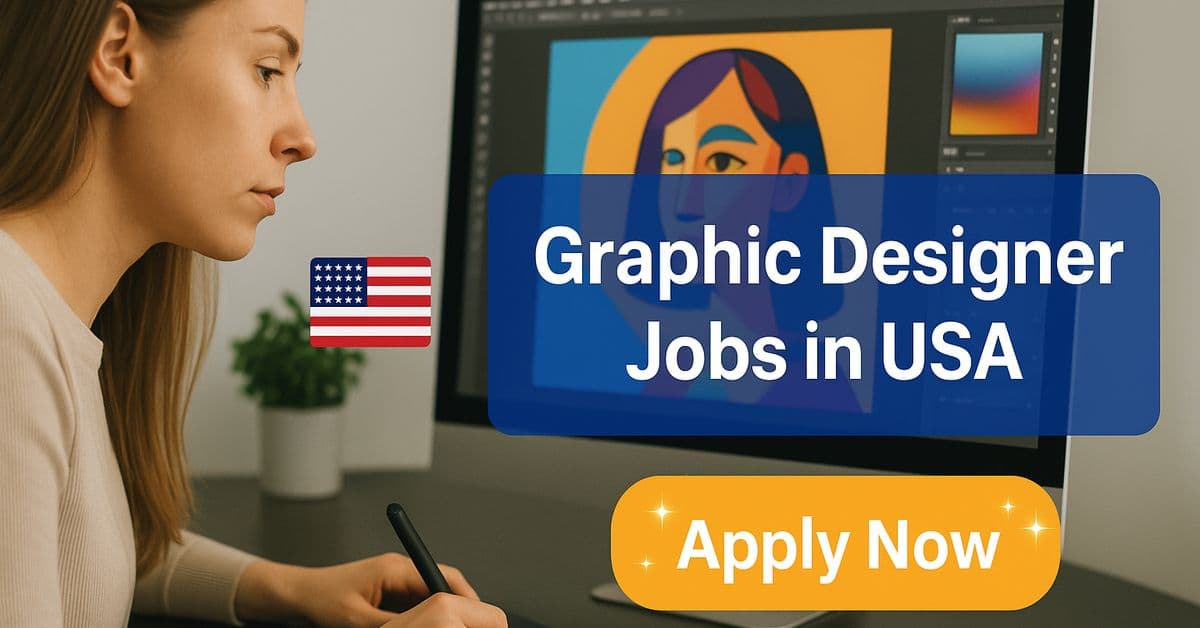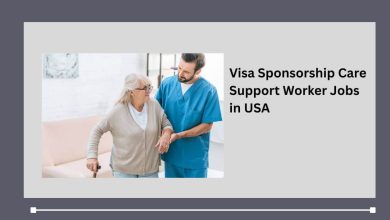Visa Sponsorship Sewing Jobs in USA 2025
Looking for a hands-on and creative career in 2025? Sewing professionals in the United States can earn between $25000 to $70000 annually depending on experience and specialization. Whether you’re starting out in entry-level roles or stepping into specialized positions like Pattern Making or Costume Design.
These jobs offer both physical and in-person work opportunities that let you craft something tangible every day. With visa sponsorship available, you can legally work in the U.S., gain valuable experience, and even pave a pathway toward permanent residency all while turning your passion for fabrics and design into a fulfilling career.
Details:
- Job Title: Visa Sponsorship Sewing Jobs in USA
- Location: United States (Multiple locations depending on employer)
- Visa Sponsorship: Available (H-2B, EB-3, or other relevant work visas)
Requirements:
- Educational Background:
- While many positions in sewing do not require advanced education, a high school diploma or GED is often necessary for entry-level positions.
- More specialized roles, such as Pattern Makers or Costume Designers, may require formal education or training in fashion design or textile technology.
- Experience:
- Previous work experience in textiles, fashion design, or a related field is beneficial, especially for more advanced positions.
- Entry-level positions may accept candidates without direct industry experience, particularly those who have undergone relevant training or internships.
- Technical Skills:
- Proficiency in operating industrial sewing machines, cutting fabrics, and manipulating different types of textiles is essential.
- Knowledge of measuring, pattern-making, and modifying designs is important for producing high-quality work.
- Attention to Detail:
- Precision is essential in roles that involve high-end fashion, custom garments, or embroidery. A keen eye for detail ensures the end product meets the specifications.
Duties:
- Fabric Cutting and Measuring:
- Accurate cutting and measuring are crucial to ensure that textiles are prepared properly before they are sewn into finished products.
- Reading and Following Patterns:
- Sewing professionals must have a strong understanding of patterns, technical drawings, and measurements to create garments or textiles as per the designer’s specifications.
- Altering and Repairing Clothing:
- Sewing professionals are often responsible for altering garments, resizing them, hemming, or repairing damaged clothes.
- Quality Control:
- Inspecting finished items for defects, ensuring correct stitch counts, and removing visible loose threads are key aspects of maintaining product quality.
Check Also: Visa Sponsorship Chef De Partie Jobs in USA
Benefits:
- Legal Work Authorization
Visa sponsorship allows you to work legally in the U.S., ensuring stability and security without immigration concerns. - Pathway to Permanent Residency
Certain visas, like EB-3, provide opportunities to obtain a Green Card and settle in the U.S. permanently. - Competitive Salaries and Overtime
Earnings range from $25 000 to $70 000 annually, with opportunities for overtime to boost total income. - Job Stability and High Demand
Skilled sewing professionals are consistently needed across fashion, upholstery, and manufacturing industries. - Skill Development Opportunities
Gain experience with the latest sewing technologies, enhancing your skills and career competitiveness. - Diverse Work Environments
Work in factories, high-end fashion houses, custom tailoring shops, or small businesses. - Access to Employee Benefits
Employers may offer health insurance, paid leave, retirement plans, and other benefits. - Career Growth Potential
Advance into supervisory roles, quality control, or even start your own business in the industry. - High Quality of Life
Enjoy a high standard of living, excellent healthcare, and a culturally diverse environment in the U.S.
Salary Expectations:
- Entry-Level Positions: $25,000 to $35,000 annually
- Experienced Sewers: $35,000 to $50,000 annually
- Specialized Roles (e.g., Pattern Makers, Tailors): $40,000 to $60,000 annually
- Supervisory Roles: $50,000 to $70,000 annually
Note: Salaries can vary significantly based on location, industry, and individual experience.
Types of Jobs:
- Tailor:
- Tailors create custom garments and modify existing clothing to meet client specifications. They may also offer repairs and alterations.
- Seamstress/Seamster:
- Seamstresses or seamsters sew garments, accessories, and home textiles. This role involves a range of tasks, from custom sewing to mass production.
- Pattern Maker:
- Pattern makers create templates or patterns for garments based on designer specifications. They may also assist in garment production by preparing fabric pieces for assembly.
- Costume Designer:
- Costume designers create clothing for theatrical productions, movies, or events. They are involved in both designing and constructing costumes.
- Upholsterer:
- Upholsterers sew and repair furniture, vehicle seats, and other upholstered items. They work with various materials such as fabric, leather, and vinyl.
- Embroidery Machine Operator:
- These professionals operate embroidery machines to add logos, designs, and other decorative elements to fabrics. This role is commonly found in garment manufacturing and custom apparel industries.
- Garment Assembler:
- These workers assemble garment components, often in a production line, ensuring that the pieces are sewn together correctly.
- Textile Worker:
- A broad category that includes roles such as weavers, knitters, and spinners who work with raw fabrics, as well as sewing professionals in quality control.
- Sewing Supervisor:
- Sewing supervisors manage and coordinate sewing teams to meet production and quality goals. They ensure that work is done efficiently and in accordance with company standards.
- Industrial Sewing Machine Operator:
- These professionals operate industrial machines that sew thick materials like canvas or leather, typically in a high-volume manufacturing setting.
Application Process for Visa Sponsorship Sewing Jobs in USA:
- Job Search Platforms:
- Look for job opportunities on job search websites, company career pages, and industry-specific job boards.
- Create a Resume and Portfolio:
- Craft a resume that highlights your sewing experience, skills, and certifications. Include a portfolio of your best work if applicable.
- Apply for Jobs Online:
- Submit your resume through online platforms or directly to companies that are offering sewing positions.
Conclusion:
Sewing jobs in the U.S. offer a rewarding blend of creativity, skill development, and competitive salaries ranging from $25000 to $70000 annually. With visa sponsorship, workers can gain legal employment, career growth, and a pathway to permanent residency. From entry-level roles to specialized positions, opportunities abound across diverse work environments and industries.
Frequently Asked Questions:
Is sewing a good career?
Yes, a career in sewing can be rewarding, offering both creative satisfaction and financial stability, particularly in specialized or supervisory roles.
What degree is needed for sewing?
Many entry-level positions in sewing do not require formal education, but roles like Pattern Making or Costume Design may require a degree in fashion design or a related field.
Is sewing a skill or talent?
Sewing is primarily a skill that can be learned and honed through practice, though natural talent can help in certain creative aspects, such as fashion design or custom tailoring.



